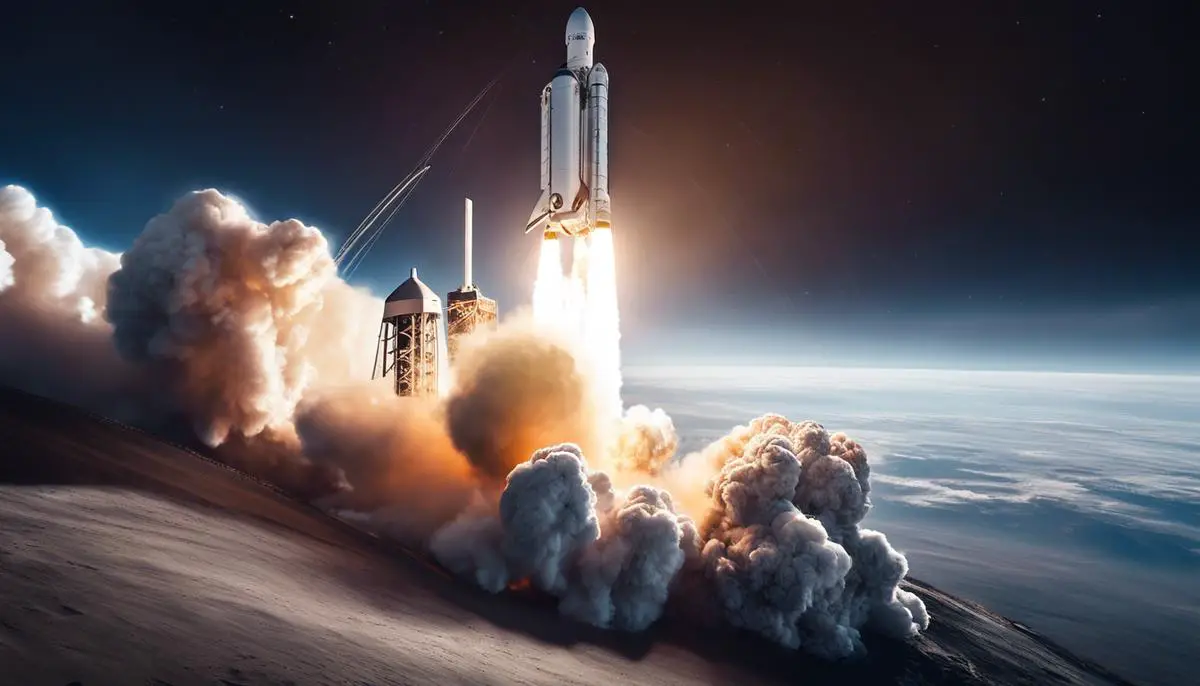In the grand theater of space exploration, Elon Musk’s SpaceX has emerged as an exciting, audacious player, with its sights set on the moon. Abruptly transforming the domain of space travel from an exclusively governmental endeavor into a dynamic scene of private vigor, SpaceX innovates and defies conventional wisdom. Their imminent moon mission vocalizes the fervor and unquenchable thirst of human beings for exploration, bolstered by futuristic technology and a vision to colonize the celestial bodies. Whether it is through the prismatic view of the company’s goals, the intricate technological tapestry of the mission, the challenges SpaceX is bound to encounter or the profound implications this mission fosters, the voyage to our closest celestial neighbor is a tale of resilience, ambition, and the relentless human spirit.
Origins and goals of the SpaceX moon mission
The Quest beyond the Blue: A Journey into the SpaceX Moon Mission
The exploration of celestial bodies has been a dream of mankind since time immemorial. Galileo’s celestial observations of the moon in 1610 marked the genesis of mankind’s comprehensive journey to comprehend the moon in phenomenological depth. Fast forward to the 21st century, SpaceX, a profound pioneer in private space pursuits, is dedicated to literally propelling mankind into the void beyond the reach of gravity. This article delves into the origins and specific objectives of the SpaceX moon mission – an odyssey of dreams, science, and the indomitable human spirit.
Rising from the sagacity and vision of Elon Musk, SpaceX was founded in 2002 with the core principle of making space travel commonplace and fostering life on other planets. The moon mission, known as #DearMoon is a creative expedition of SpaceX supported by Yusaku Maezawa, a Japanese billionaire and enthusiastic patron of the arts & science. Maezawa’s brainchild, the #DearMoon project, is slated for 2023 and promises to be a grandiose embodiment of SpaceX’s foundational principles.
The SpaceX moon mission aims at nothing less than transforming space travel paradigms. Specifically, it has three distinct objectives that interweave technological advancements with a philosophical quest.
- Technological Excellence: The heart of SpaceX’s moon mission is the visionary Starship spacecraft. A marvel of modern engineering, Starship is designed to utilize the optimal parameters of interplanetary travel that scientists have developed after decades of learning from the successes and failures of the past. The mission thus has a pragmatic objective of testing and refining this spaceship’s capacity for extended, extra-terrestrial travel.
- Promoting Sustainable Human Life beyond Earth: Fundamentally, the moon mission is the stepping stone for SpaceX’s masterplan to colonize Mars and create multi-planetary human civilization. The lessons learned from surviving the moon mission will provide a robust model for future sustainable life exploration initiatives, and help us expand our horizons beyond the confines of our home planet.
- Cultural and Artistic Expression: The #DearMoon project holds an innovative manifesto. It plans to take artists from different domains to the moon and back, helping them witness the exquisite magnificence of Mother Earth from afar, with the hope that their experiences will inspire masterpieces that push the boundaries of their artistic media. The mission thereby seeks to encourage interplay between scientific exploration and spiritual contemplation reflected in artistic expressions.
Pushing the boundaries of the possible, the SpaceX moon mission holds the promise of staying true to our species’ inherent desire to explore, to understand, to aspire, and to ultimately redefine our place in the cosmos. In this quest, every minute step, every mishap turned learning opportunity, and every discovery stands testament to the technical prowess, relentless will, and visionary spirit that bind us. And so, as SpaceX builds on the dreams of yore to script the new horizons of tomorrow, the moon awaits – no longer as a distant celestial body of aspirations, but as a tangible beacon of human potential.
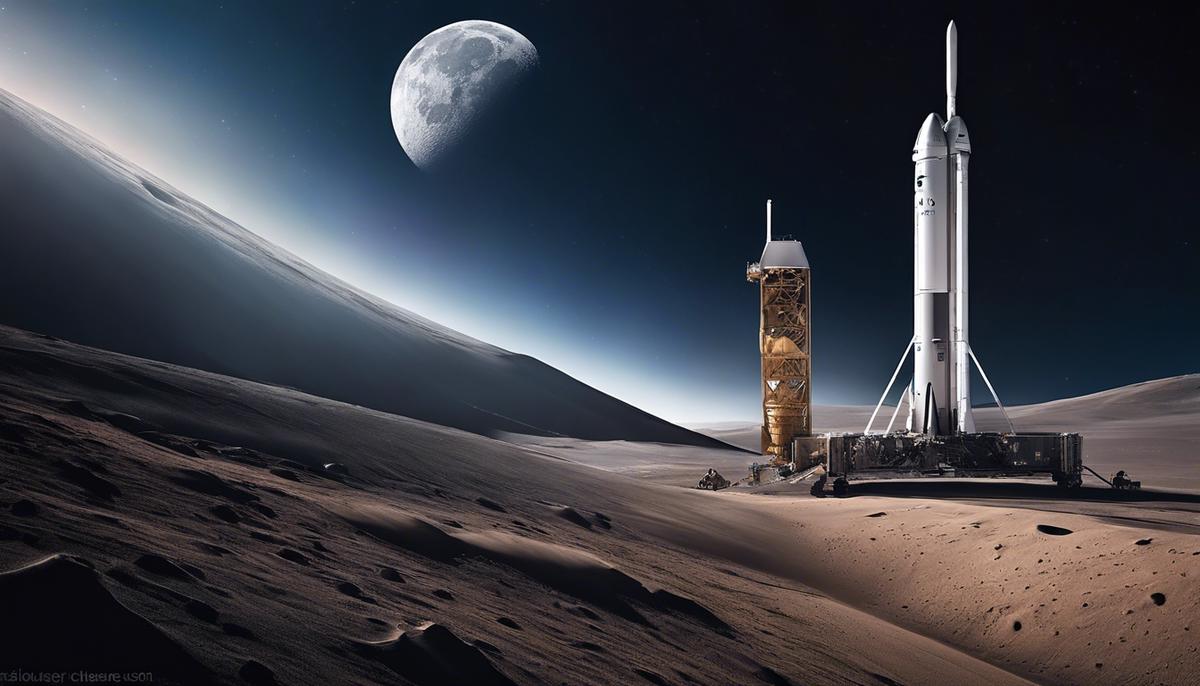
Technology and Innovation Involved
Delving deeper into SpaceX’s Moon Mission, one can’t fail to appreciate the sheer magnitude of technological innovation and problem-solving prowess on display. central to this transformative undertaking are the various revolutionary techniques and scientific advancements epitomizing the modern space age.
Firstly, in order to sustain the long-distance voyage to the moon and back, SpaceX has embraced the concept of in-flight refueling. This groundbreaking technique allows the propellant, essential for the spaceship’s return trip, to be uploaded after the initial ascent to orbit. This ingenious solution extends the spacecraft’s range, enabling missions to far-flung destinations without the necessity for enormous fuel storage capabilities, thereby economizing space and resources.
Another innovation lies in SpaceX’s autonomous docking system. This technology, already demonstrated during the successful completion of the Crew Dragon missions to the International Space Station (ISS) enables spacecraft to autonomously dock with another structure in space – a capability critical for the long duration lunar missions.
On board the spacecraft itself, advanced life support systems are indispensable. These systems ensure a regulated environment with sufficient oxygen, temperature control, and waste management facilities for the astronauts and passengers throughout the mission. For the lunar voyage, such systems must be robust enough to maintain habitability amid the varying conditions of space, the moon, and re-entry to Earth’s atmosphere.
SpaceX also strives for sustainability in space exploration. As part of its long-term vision of making life interplanetary, the company is pioneering reusable rocket technology. This innovation revolutionizes the economics of space travel by drastically reducing costs. The Starship, chosen for the Moon mission, is designed to be fully reusable, meaning its booster stage and spacecraft can land back on Earth and be flown again. The reusability not only offers a pragmatic economic advantage but also denotes a significant step toward making space travel a common reality.
Moreover, navigation technology developed for the mission transcends the traditional. Fundamentally redesigned from those used for Earth-based navigation, this technology ensures accuracy even in the moon’s lack of GPS or any distinct geophysical markers.
Undoubtedly, the SpaceX’s Moon mission is a testimony to human ingenuity and the endeavor to transcend terrestrial boundaries. By leveraging radical technologies, this mission propels us not just beyond our home planet, but also into a future where space travel becomes considerably more accessible and commonplace. Commensurately, the undertaking provokes a profound evolution in our perception of sky and space, evolving from the unreachable, to a frontier of possible habitation and exploration.
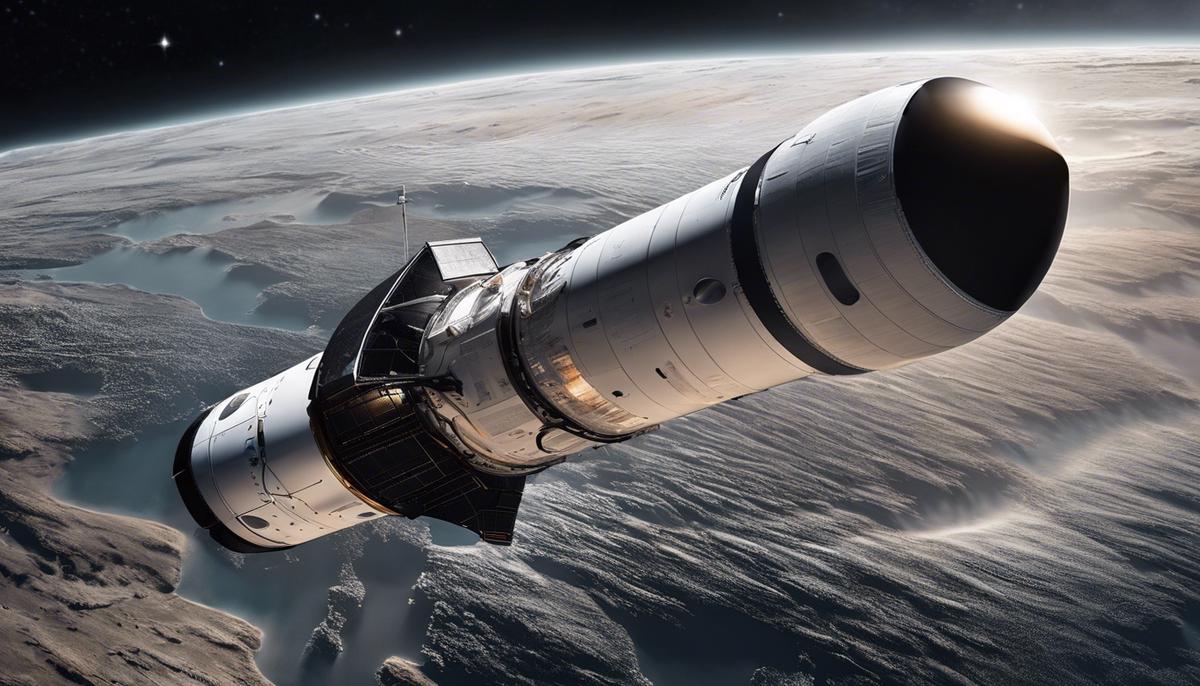
Challenges and Solutions
SpaceX’s moon mission poses a host of significant challenges, both familiar and unprecedented. Careful examination and innovative solutions are required to navigate the inherent uncertainties and stumbling blocks of this ambitious venture.
One of the most pressing challenges is the harsh space radiation environment. It is a perilous threat to the crew’s health and the spacecraft’s electrical systems. To overcome this, SpaceX will likely use materials and technologies that offer radiation shielding such as multi-layered walls, use of hydrogen-rich materials, and implementing design architectures that shield critical systems and habitation areas. More so, the craft is equipped with radiation detectors to monitor radiation levels real-time – allowing for responsive mitigation strategies.
Tolerating extreme thermal environment represents another considerable issue; heat variations can be extreme in space and on the Moon’s surface. SpaceX is likely to leverage it’s experience with thermal protection systems developed for its previous spacecrafts. Starship’s heat shield is designed to withstand multiple re-entries, a technology that could be adapted for the lunar environment.
Furthermore, maintaining communication with Earth is a non-negotiable requirement. Spacecrafts on lunar missions can go through periods of radio darkness when they are on the far side of the moon. SpaceX will likely use relay satellites to maintain communication with the Earth during these phases, providing continuous radio contact for secure transmission of data and communication.
Landing on the moon’s surface presents another challenge. The lunar surface is covered in a layer of fine, electrostatically charged dust that can cause extreme wear and damage to equipment. To circumvent this, SpaceX plans to use a precision landing system on its craft that can avoid hazardous spots.
Sustainability is also at the heart of SpaceX’s approach to space exploration. The incorporation of reusable elements in the spacecraft design aids in this goal. Landing propellant tanks on the Moon for future missions is one of the many strategies that SpaceX could employ to ensure long-term sustainability of moon missions.
Finally, the risk posed by micrometeoroids, though small, must be considered. Tiny, high-velocity meteoroids can cause severe damage to spacecrafts. Developing robust, self-healing material technologies for spacecrafts could be an essential aspect of risk management against potential micrometeoroid impacts.
These challenges underscore the complexity of the moon mission, but they are not insurmountable. SpaceX’s innovative technologies and commitment to meticulous preparation indicate readiness to navigate these obstacles and realize the dream of sustainable lunar exploration.
While the SpaceX moon mission is laced with myriad technicalities and potential dangers, it is precisely in overcoming these might the mission push mankind’s quest for the stars to new frontiers – transforming not only our perception of space travel and exploration but also the fundamental fabric of our own potential.
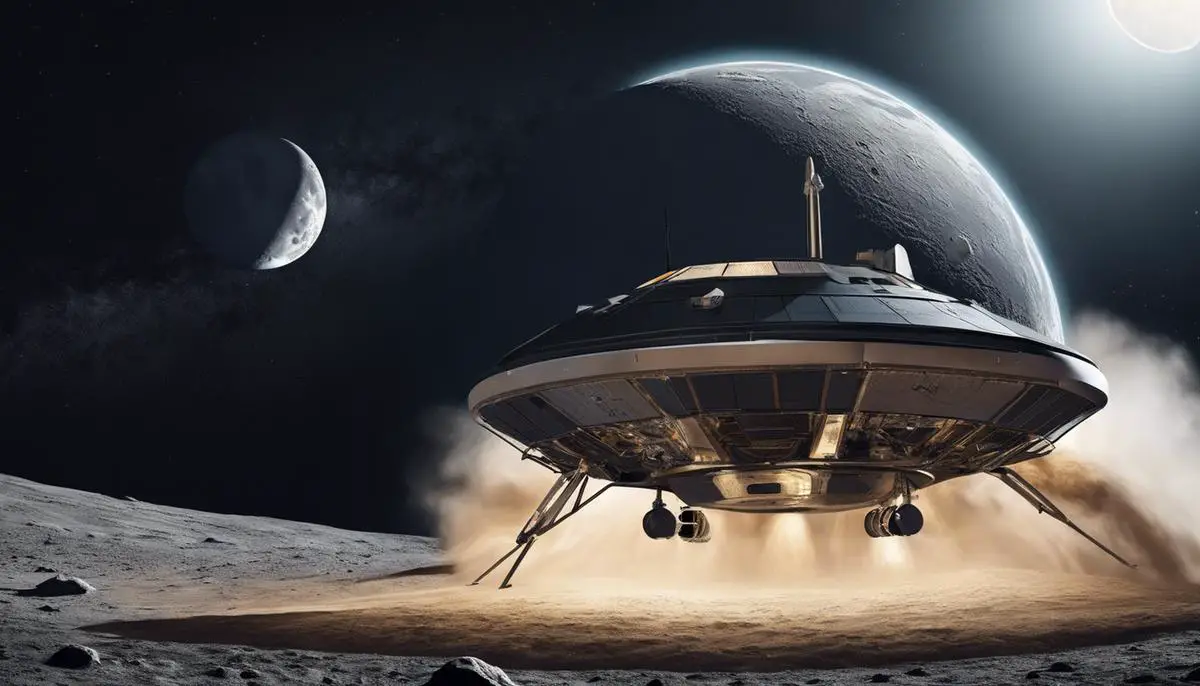
Implications and Impact
Expanding further, another profound implication of SpaceX’s moon mission is the potential establishment of lunar infrastructure for space exploration. By focusing on the lunar surface, SpaceX is essentially creating a launchpad for future missions deeper into the cosmos. Initially conceived as a stepping stone for Mars colonization, the moon mission could prove to be a game changer, as it may lead to the development of crucial logistics like refueling stations, research bases, and even habitats. Not to mention, harnessing the moon’s resources – a concept known as in-situ resource utilization – could revolutionize the sustainability and efficiency of space exploration.
The consequent advancements in space technology triggered by SpaceX’s moon mission will also aid in the discovery and understanding of the unknown. The mission will supply a plethora of information about the lunar environment, which has never been explored by humans since the Apollo missions. This could unlock invaluable insight into the moon’s geological history, potentially revealing secrets about the early solar system, and by extension, our own planet’s past. Furthermore, the mission will enable researchers to study the effects of long-duration spaceflight on the human body, a necessary prerequisite for missions to Mars and beyond.
Additionally, the SpaceX moon mission could also have implications for international collaboration in space exploration. Seen as a catalyst, such audacious endeavors in space might spur other nations to boost their own space programs, triggering a new era of boon in space exploration. This could result in collaborative projects, sharing of resources and knowledge, and unified objectives among nations – propelling us further into the cosmos.
Furthermore, the implications of SpaceX’s moon mission seep into the economic sphere as well. This venture heralds the onset of a booming lunar economy, which could involve everything from resource mining to space tourism. As space travel becomes more commercialized and commonplace, the economic ripple effects could be massive. Industries related to space exploration and travel could see exponential growth, driving innovation, creating jobs, and altering the global economy in unprecedented ways.
More abstractly yet significantly, the SpaceX moon mission is instrumental in nourishing a shift in societal mindset. It pushes the seemingly impossible limits of human potential, instilling a culture of exploration and innovation. In the larger scheme, it fosters a collective aspiration for humanity, binding us all in the shared pursuit of knowledge and understanding. This, needless to say, fuels the immortal human spirit, inspiring future generations to reach out to the stars.
Hence, the SpaceX Moon mission has vast implications for space exploration and beyond. It aids in the expansion of human knowledge, triggers advancements in technology, promotes international collaboration, creates a potential lunar economy, and inspires a culture of exploration and innovation. As such, this mission stands as a watershed moment in our shared pursuit of the cosmos, marking a pivotal step towards the future.
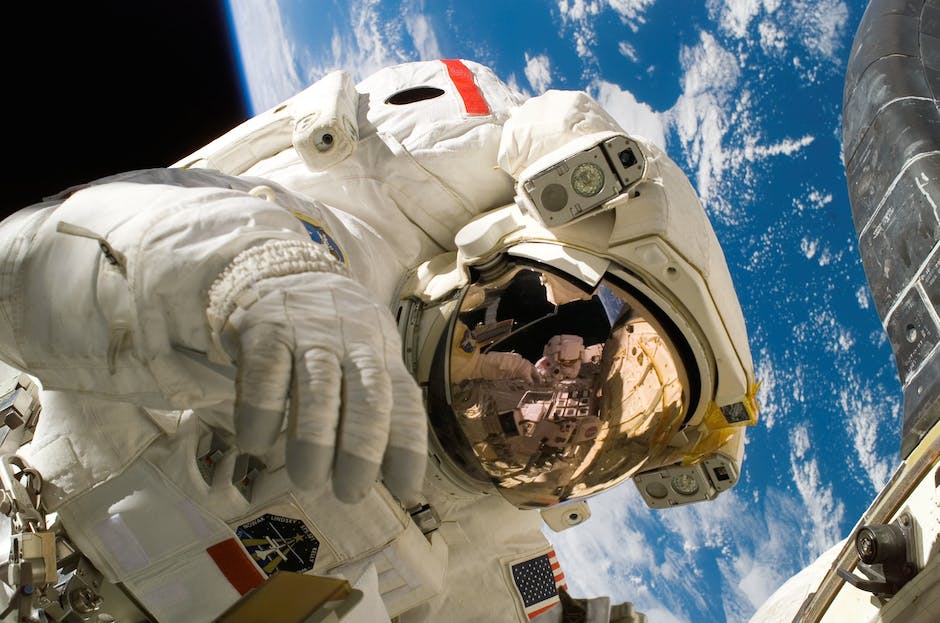
Ultimately, the SpaceX moon mission, with its pioneering technology and audacious goals, signifies a remarkable evolution in the human journey through the cosmos. These endeavors will likely act as catalysts, revolutionizing not only space exploration but potentially influencing other sectors and policy. The mission could transform the concept of space itself – from an unattainable frontier to a realm of human possibility, accommodating tourism and settlement. However, this venture is not without its significant trials. As SpaceX maneuvers through these challenges and forges solutions with an inventive spirit, this entire endeavor leaves us on the precipice of a new era. An era viewing the cosmos not as an intimidating abyss but a canvas for human innovation and exploration, teeming with untold opportunities and a testament to our innate proclivity to push boundaries.
![]()
